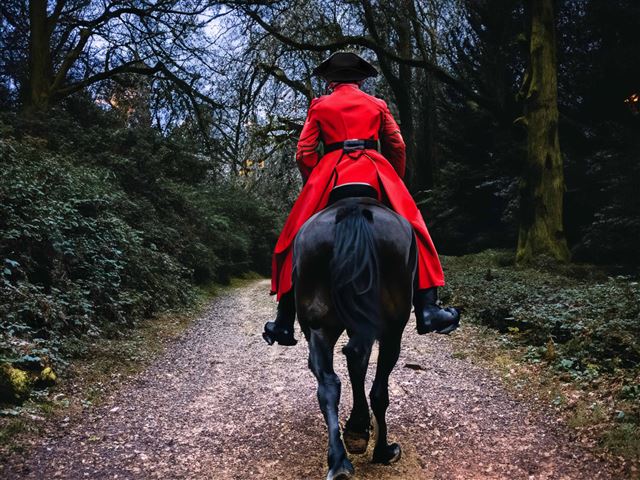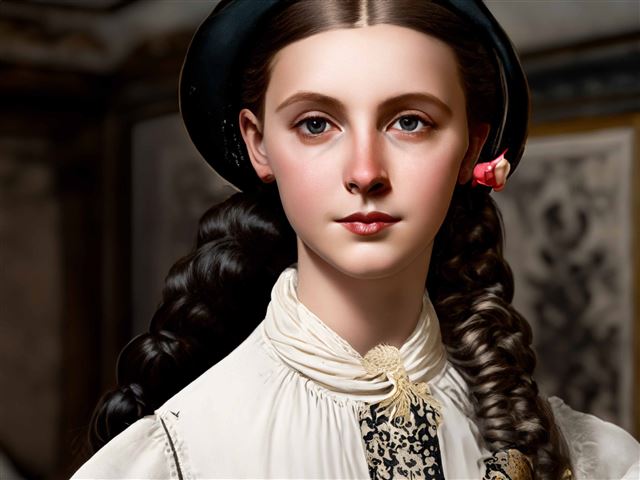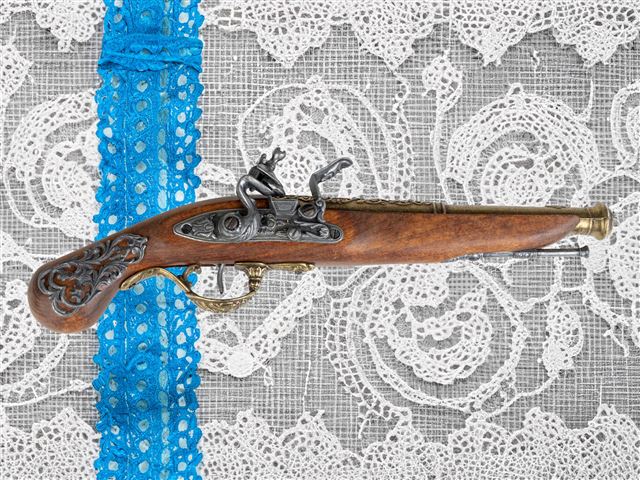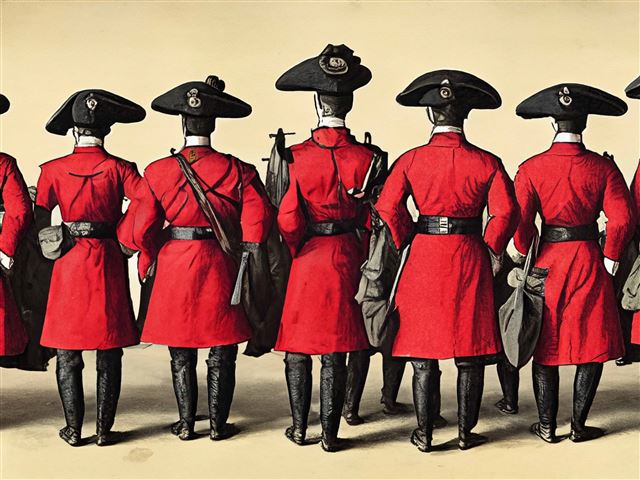Alfred Noyes' poem "The Highwayman" is a classic tale of love, betrayal, and tragedy. But beyond its captivating storyline, the poem is also rich in symbolism, using various objects and elements to represent deeper meanings and themes. In this article, we will delve into the symbolism in Alfred Noyes' "The Highwayman" and explore the deeper layers of meaning in this beloved poem.
The Highwayman
Before we dive into the symbolism, let's first understand the main character of the poem - the highwayman. In the poem, the highwayman is a notorious thief who robs travelers on the road. He is described as a handsome and daring man, with a red coat and a black horse. The highwayman is a symbol of rebellion and danger, representing the allure of a life outside the law.
The Red Coat

The highwayman's red coat is a prominent symbol in the poem. Red is often associated with passion, love, and danger, all of which are themes present in the poem. The color also represents the highwayman's bold and daring nature, as well as his status as an outlaw. The red coat is a symbol of the highwayman's identity and his chosen way of life.
The Black Horse

The highwayman's black horse is another important symbol in the poem. Black is often associated with death and darkness, foreshadowing the tragic ending of the poem. The horse also represents the highwayman's means of escape and his freedom. It is a symbol of his wild and untamed spirit, as well as his loyalty to his love, Bess.
Bess
Bess is the highwayman's love interest and plays a crucial role in the poem. She is a symbol of innocence and purity, representing the light in the darkness of the highwayman's world.

The White Dress
Bess is described as wearing a white dress, which is a symbol of her purity and innocence. White is often associated with goodness and light, contrasting with the darkness of the highwayman's world. The white dress also represents Bess' loyalty and love for the highwayman, as she waits for him every night despite the danger.
The Dark Eyes
Bess' dark eyes are another symbol in the poem. They are described as "like the night" and represent her connection to the highwayman's world. Bess' dark eyes also symbolize her bravery and determination, as she risks her life to warn the highwayman of the soldiers' ambush.
The Moon
The moon is a recurring symbol in the poem, representing different themes and emotions throughout the story.
The Moon as a Witness
In the beginning, the moon is described as a "ghostly galleon" sailing through the sky, watching over the events of the poem. The moon is a symbol of fate and destiny, as it silently observes the tragic love story of the highwayman and Bess.
The Moon as a Symbol of Love
As the highwayman rides to meet Bess, the moon is described as "a ribbon of moonlight" that guides him to her. The moon is a symbol of the love between the highwayman and Bess, as it illuminates their path and brings them together.
The Moon as a Symbol of Betrayal

In the final stanza, the moon is described as "a ghostly galleon tossed upon cloudy seas." This symbolizes the betrayal of Bess, who sacrifices herself to save the highwayman. The moon, which was once a symbol of love and fate, now represents the tragic end of their love story.
The Pistol
The pistol is a symbol of power and violence in the poem, representing the destructive nature of the highwayman's lifestyle.
The Pistol as a Symbol of Power

The highwayman's pistol is described as "a bunch of lace" and "a ribbon of blue" in the poem. These delicate and feminine descriptions contrast with the weapon's true purpose - to instill fear and exert power over others. The pistol is a symbol of the highwayman's dominance and control over his victims.
The Pistol as a Symbol of Violence
In the final stanza, the pistol is described as "a trigger touch" that ends the lives of the highwayman and Bess. This symbolizes the destructive nature of violence and the tragic consequences of the highwayman's actions.
The Soldiers
The soldiers in the poem are a symbol of authority and law, representing the forces that stand in the way of the highwayman and Bess' love.
The Red Coats

The soldiers are described as wearing red coats, similar to the highwayman's. This symbolizes the parallel between the two groups - both are armed and dangerous, but one is seen as a hero while the other is seen as a criminal. The red coats also represent the soldiers' loyalty to their duty and their willingness to use violence to uphold the law.
The Trumpets
The soldiers' trumpets are a symbol of warning and danger in the poem. They are described as "a chorus of ghosts" that signal the highwayman's impending doom. The trumpets represent the soldiers' power and their ability to control the situation, ultimately leading to the tragic end of the poem.
Conclusion
Alfred Noyes' "The Highwayman" is a masterpiece of symbolism, using various objects and elements to represent deeper meanings and themes. The red coat, black horse, white dress, dark eyes, moon, pistol, and soldiers all play a crucial role in the poem, adding layers of meaning to the tragic love story of the highwayman and Bess. By exploring the symbolism in this beloved poem, we can gain a deeper understanding of its themes and appreciate its beauty even more.
